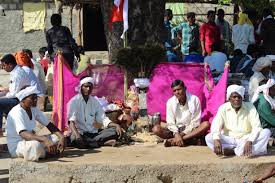Kolam Tribe:

A pilot bamboo plantation project was initiated to restore traditional livelihoods of Kolam tribal people in Adilabad district of Telangana.
- Kolam tribes, also known as Kolamboli, Kulme and Kolmi, occupy a major portion of Madhya Pradesh.
- These tribal groups are reckoned as scheduled tribes and apart from Madhya Pradesh they reside in some parts of Maharashtra and Andhra Pradesh.
- They are listed as Particularly Vulnerable Tribal Group (PVTG).
- Around the twelfth century, the Kolam served as priests for the Gond, representing some of their important gods.
- It is generally accepted that the Kolam descended from the original population in the area.
- Since they now live near the Gond, they have adopted much of the Gond lifestyle.
- The Kolam people are divided into different clans, like Chal Deve, Pach Deve, Saha Deve, and Sat Deve.
- Marriages between the same clans are not permissible.
- The Kolams use the name of their clans as their surnames.
- Their society is patrilineal, meaning that the line of descent is traced through the males.
- The Kolam are mainly farmers and forest workers. In times past, they used shifting cultivation on the hill slopes.
- They speak a Dravidian language called Kolami, and nearly all of the adults also speak Marathi, Telugu, or Gondi.\
- The Kolam people celebrate different rituals that include Matya or Churaghali, Bai-Baki, Sati, Jaitur Pooja, Waghai Pooja etc.




